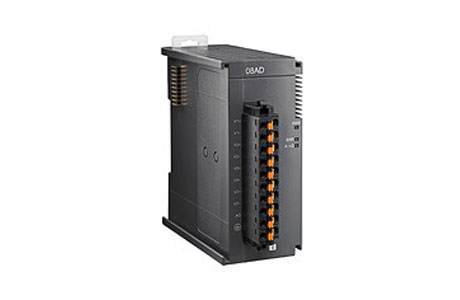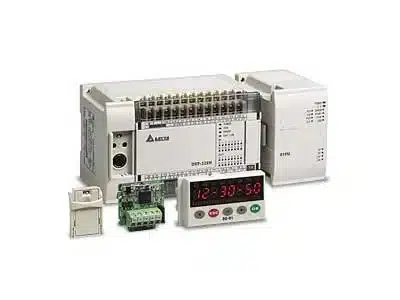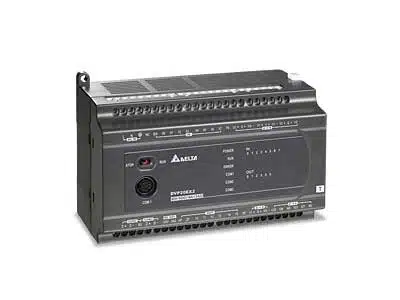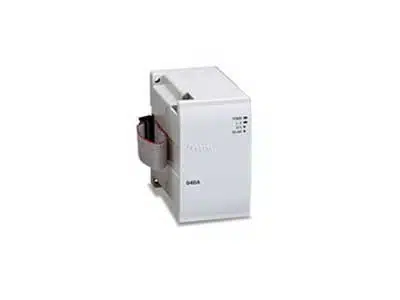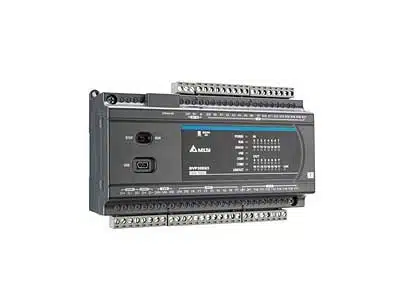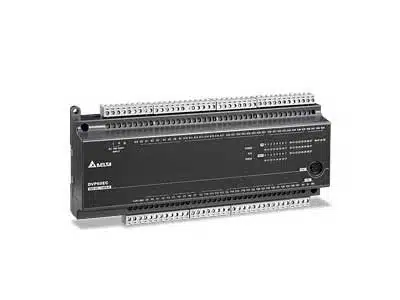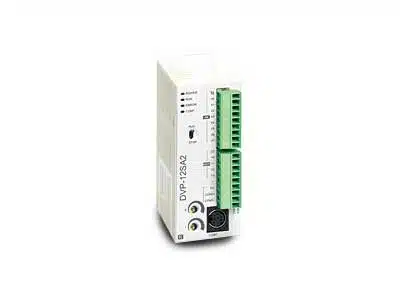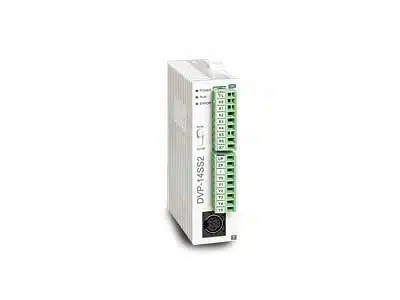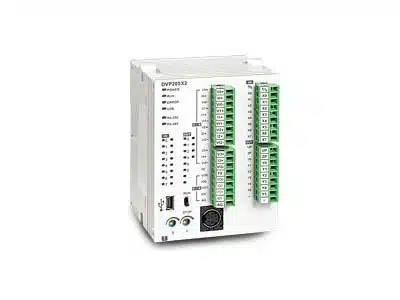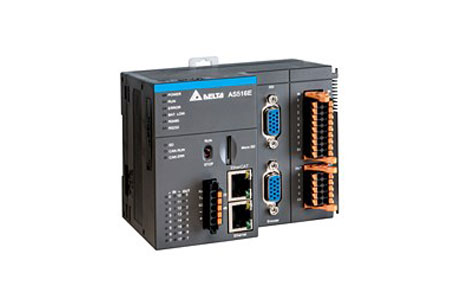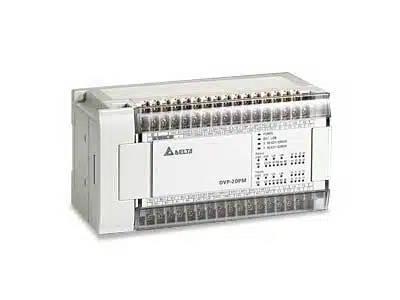Delta PLC: Leading PLC Controller Solutions
IndMALL Automation is your trusted destination for Delta PLCs (Programmable Logic Controllers), including the sought-after Delta DVP series and Delta Electronics PLC solutions. Discover the Delta DVP SS2, DVP SX2, DVP12SA2, and DVP 28SV models, as well as the Delta AS Series PLC and Delta ES2 PLC. Need a specific configuration? Consider our Delta PLC with 8 inputs/8 outputs, such as the Delta PLC DVP 16SP or DVP 12SE.
We also feature the Ethernet-enabled Delta PLC and the Delta PLC AS300 for seamless connectivity. From the PLC Delta DVP to the compact Delta SS2 and SX2, we guarantee affordability and quality. Planning to buy Delta PLC? Our offerings, from the Delta PLC panel to the Delta programmable logic controller, ensure performance and value.
Delta PLC: DVP EH3 Series
Delta’s DVP-EH3, the newest member of the distinguished DVP-E series, boasts enhanced program capacity and data registers, making it ideal for intricate and high-demand automation tasks.
DVP-EH3
Delta DVP ES2 Series
Delta DVP-ES2 PLC: Compact controller with 16-60 MPU points, 16k step capacity, three COM ports, supports 256 I/O points, and offers 14-bit analog/temperature modules.
DVP-ES2 Series
Delta PLC Controller: DVP-EH Series
Delta presents the DVP-EH Series, a flexible programmable logic controller offering a variety of modules. Options encompass digital (output/input/mix), analog (output/input/mix), load cell, temperature monitoring, network, and distant I/O communication modules.
DVP-EH Series
PLC Delta: DVP ES3 Series
Delta DVP-ES3 Series: Features a CPU with four high-speed counter inputs, operates 4-axis controls with pulse function, and supports optional 8-axis CANopen position output.
DVP ES3 Series
Delta Programmable Logic Controllers: DVP EC3 Series
Delta Programmable Controllers DVP-EC3 Series Operates with diverse control devices, supports 10-60 MPU points, 4k step program capacity, built-in RS-232 and RS-485 ports, and 60 max I/O points.
DVP EC3 Series
Delta DVP-SA2
Delta DVP-SA2 Series Slim PLC with enhanced capacity and efficiency, 100kHz high-speed output, counting functions, and compatibility with DVP S series extension modules
DVP SA2 Series
Delta DVP SS2
Delta DVP-SS2 PLC has 14 MPU points, 494 max I/O points, 8k step capacity, RS-232/RS-485 with Modbus protocol, 4 high-speed pulse outputs, and built-in counters.
DVP SS2 Series
Delta SX2 Series
Delta DVP-SX2 Series has RS-232, RS-485, USB ports, ASCII/RTU protocol, 20 MPU points, 494 max I/O, 100/10 kHz pulse output, and integrated analog I/O options.
DVP SX2 Series
Delta AS Series PLC
Delta AS Series PLC has High-performance, 32-bit SoC CPU, 40 k steps/ms execution, supports 1,024 I/Os, 8-axis CANopen, 6-axis pulse control (200kHz), EtherCAT/CANopen interface, and multi-port communication.”
AS Series
Delta Electronic PLC: DVP 20PM
Delta DVP-20 PM Series PLC Features 16 MPU points, 512 I/O points, 64K step capacity, RS-232 and RS-485 ports, and a 500kHz high-speed pulse output.
DVP 20 PM
People Also Ask
Why Delta PLC is used?
Delta PLCs are utilized for their high performance, reliability, and versatility in automation tasks. They offer advanced features like fast execution speeds, extensive I/O support, and compatibility with various communication protocols.
Delta PLCs enhance operational efficiency, provide precise control, and are suitable for a wide range of industries, from packaging to textiles. Their adaptability makes them a preferred choice for diverse automated equipment.
What does PLC mean in HVAC?
In HVAC, PLC stands for “Programmable Logic Controller.” It’s a digital computer used for the automation of electromechanical processes, such as the control of machinery or HVAC systems.
PLCs are designed to withstand harsh conditions and provide reliable, real-time control and monitoring. They help in optimizing HVAC operations, ensuring energy efficiency, and maintaining desired environmental conditions within buildings.
What are the disadvantages of PLC?
Disadvantages of PLCs include:
- Initial high costs for setup and programming.
- Requires specialized knowledge of programming and troubleshooting.
- Limited processing speed for complex operations.
- Potential obsolescence as technology advances.
- Not ideal for large-scale applications due to memory constraints.
- Hardware failures can lead to system downtimes.
These limitations necessitate careful consideration when choosing PLCs for specific applications.
What are the basic components of PLC?
The basic components of a PLC include:
- Processor/ CPU: The brain of the PLC, executing the control program.
- Input/Output (I/O) Modules: Interface for sensors and actuators.
- Power Supply: Provides necessary voltage for the PLC and its I/O modules.
- Memory Unit: Stores the user’s program and data.
- Programming Device: Used to input the desired control program.
- Communication Ports: Allow PLCs to communicate with other devices.
These components work together to automate and control processes.
Discover our selection and secure unmatched deals on Delta PLCs or Delta Programmable Logic Controllers.

